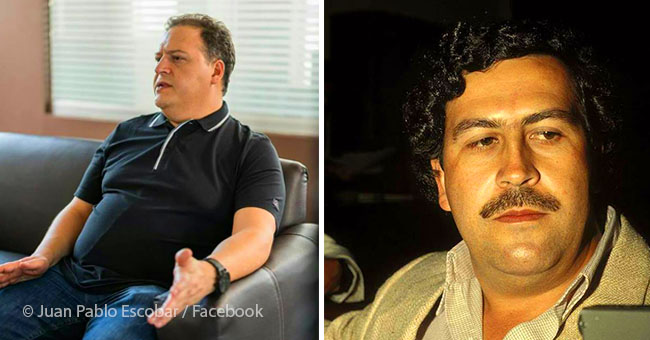

Phillip only discovered his biological father’s true identity in 1989, when an ailing Patrick began to share secrets that had long stayed buried. The book is Son Of Escobar: First Born, an autobiography written in the style of a thriller, telling the story of Phillip’s two fathers, Patrick and Pablo, very different men whose lives became inextricably intertwined. Last two or three years, I’ve been well enough to deal with it properly because I’ve had a lot of health problems with this life of mine. “I just started writing this story about my life years ago. “I had no idea what was going to happen with this book,” he says. His accent is British, his enthusiasm infectious. Today, Phillip Witcomb AKA Roberto Sendoya Escobar is a successful artist in his fifties, speaking to me over Zoom from his home in Mallorca.

Sometimes he would dream of gunshots, and a young woman screaming. Yet Phillip was also the target of several thwarted kidnap attempts. Young Phillip Witcomb enjoyed a privileged upbringing, waited on by servants, protected by bodyguards, ensconced in a household whose visitors included the President of Colombia himself. Adopted him and raised him in the closeted opulence of high-society Colombia. Yes, Witcomb adopted the child he found in the bloodstained safehouse. And across the line, an ambitious young cartel member, quickly gaining a reputation for his audacity and ruthlessness: Pablo Escobar, the biological father of Witcomb’s adopted son. One of his contacts was a Panamanian military officer named Manuel Noriega, whose eventual rise to dictator would be facilitated in no small part by his friends in the United States. Intelligence gathered via this arrangement was passed onto the CIA, already deeply embedded within the region.Īs De La Rue’s man on the ground, Witcomb oversaw both sides of the operation, dealing with government and ganglords alike. How was this infiltration facilitated? Simple: De La Rue offered to transport the gangs’ money for them, providing the same service as it did for the national government. You see, De La Rue was not only in Colombia to print pesos the firm was also on a mission to infiltrate the country’s nascent yet rapidly growing cocaine trade. In a narrative of extraordinary characters, he may be the most extraordinary of all. The agent was a man named Patrick Witcomb. The dawn raid was as much about payback as recovering the money: a power play to show the various Colombian gangs that you couldn’t steal from De La Rue with impunity. The village was the hideout of a gang that had been reckless enough to ambush one of De La Rue’s armoured cars, killing two security guards and escaping with several hundred thousand dollars. The helicopters belonged to a company called De La Rue, a banknote printer and security firm tasked with the management of Colombia’s currency in the 1960s. The era of the drug cartels is about to begin. Later, when he examines the birth certificate more closely, he will see the father is named as ‘Pablo Escobar’ – a name that means nothing to him or the wider world. Within it, the agent finds a birth certificate: Roberto Sendoya Escobar. Using the last of her dwindling strength, the girl gestures to a drawer. A British agent stands over the child inside it. A sleepy village on a remote rural hillside. Two helicopters silhouetted against the rising Colombian sun.


 0 kommentar(er)
0 kommentar(er)
